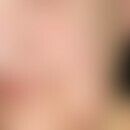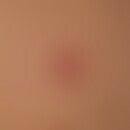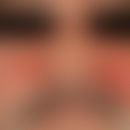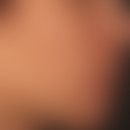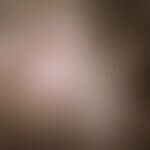Synonym(s)
DefinitionThis section has been translated automatically.
Rare, benign follicular epithelial cyst with tricholemmal keratinization mechanism (see tricholemma, see also hair follicle tumor, epidermal cysts), i.e., keratinization that occurs abruptly without flattening of the uppermost epithelial layers and without formation of a stratum granulosum.
EtiopathogenesisThis section has been translated automatically.
You might also be interested in
ManifestationThis section has been translated automatically.
LocalizationThis section has been translated automatically.
Located on the capillitium in more than 90% of patients. Other localizations are: extremities, genitals.
ClinicThis section has been translated automatically.
Solitary, but usually multiple 0.5-5 cm, dome-shaped raised, usually hairless, bulging, firm, round, well-displaced over the base, asymptomatic nodules without demonstrable central porus (see also epidermal cysts).
In rare cases, trichilemmal cysts, usually in combination with acne efflorescences, manifest as organoid epidermal nevus in a strip-like arrangement (see nevus trichlemmocysticus).
HistologyThis section has been translated automatically.
Differential diagnosisThis section has been translated automatically.
TherapyThis section has been translated automatically.
Cave! Remaining cyst wall remains cause recurrences!
Progression/forecastThis section has been translated automatically.
Note(s)This section has been translated automatically.
LiteratureThis section has been translated automatically.
- Haas N et al (2002) Carcinoma arising in a proliferating trichilemmal cyst expresses fetal and trichilemmal hair phenotype. At J Dermatopathol 24: 340-344
- Lopez-Rios F et al (2000) Proliferating trichilemmal cyst with focal invasion: report of a case and a review of the literature. At J Dermatopathol 22: 183-187
- Riemann H et al (1999) Proliferating trichilemmal cyst with focal segments of metastatic squamous epithelial carcinoma. dermatologist 50: 42-46
- Seidenari S et al (2012) Hereditary trichilemmal cysts: a proposal for the assessment of diagnostic clinical criteria. Clin Genet 84:65-69
- Sethi S et al (2002) Proliferating trichilemmal cyst: report of two cases, one benign and the other malignant. J Dermatol 29: 214-220
- Tola EN et al (2013) Simple vulval trichilemmal cyst. J Obstet Gynaecol 33:320-321
Incoming links (11)
Atheroma; Cyst; Cyst, pilary; Cyst, trichilemmal; Epidermal cyst; Isthmus catagen-cyst; Osteoma cutis; Pilomatrixoma; Steatocystoma multiplex; Trichilemmal cyst; ... Show allOutgoing links (5)
Cylindrome; Epidermal cyst; Hair follicle tumor; Trichilemma; Trichilemmal cyst proliferating;Disclaimer
Please ask your physician for a reliable diagnosis. This website is only meant as a reference.
